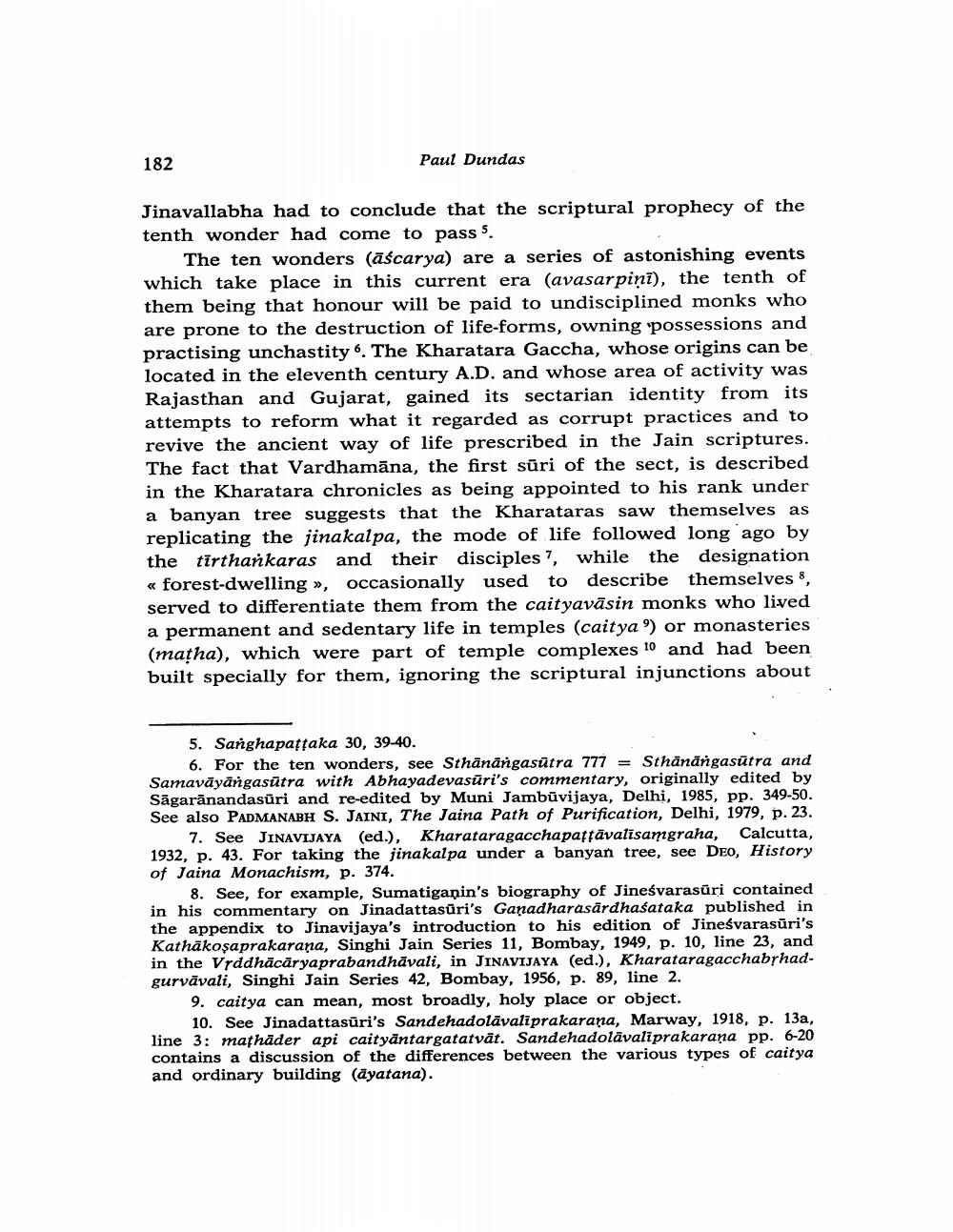________________
182
Paul Dundas
Jinavallabha had to conclude that the scriptural prophecy of the tenth wonder had come to pass 5.
The ten wonders (āścarya) are a series of astonishing events which take place in this current era (avasarpiņi), the tenth of them being that honour will be paid to undisciplined monks who are prone to the destruction of life-forms, owning 'possessions and practising unchastity 6. The Kharatara Gaccha, whose origins can be located in the eleventh century A.D. and whose area of activity was Rajasthan and Gujarat, gained its sectarian identity from its attempts to reform what it regarded as corrupt practices and to revive the ancient way of life prescribed in the Jain scriptures. The fact that Vardhamāna, the first sūri of the sect, is described in the Kharatara chronicles as being appointed to his rank under a banyan tree suggests that the Kharataras saw themselves as replicating the jinakalpa, the mode of life followed long ago by the tirtharkaras and their disciples 7, while the designation « forest-dwelling », occasionally used to describe themselves 8, served to differentiate them from the caityavāsin monks who lived a permanent and sedentary life in temples (caitya ') or monasteries (matha), which were part of temple complexes 10 and had been built specially for them, ignoring the scriptural injunctions about
5. Sanghapattaka 30, 39-40.
6. For the ten wonders, see Sthānāngasutra 777 = Sthânăngasutra and Samavāyāngasūtra with Abhayadevasūri's commentary, originally edited by Sāgarānandasūri and re-edited by Muni Jambüvijaya, Delhi, 1985, pp. 349-50. See also PADMANABH S. JAINI, The Jaina Path of Purification, Delhi, 1979, p. 23.
7. See JINAVIJAYA (ed.), Kharataragacchapattavalisangraha, Calcutta, 1932, p. 43. For taking the jinakalpa under a banyan tree, see Deo, History of Jaina Monachism, p. 374.
8. See, for example, Sumatiganin's biography of Jineśvarasūri contained in his commentary on Jinadattasüri's Ganadharasārdhaśataka published in the appendix to Jinavijaya's introduction to his edition of Jineśvarasūri's Kathākoşaprakarana, Singhi Jain Series 11, Bombay, 1949, p. 10, line 23, and in the Vrddhācāryaprabandhāvali, in JINAVIJAYA (ed.), Kharataragacchabrhadgurvāvali, Singhi Jain Series 42, Bombay, 1956, p. 89, line 2.
9. caitya can mean, most broadly, holy place or object.
10. See Jinadattasüri's Sandehadolāvaliprakarana, Marway, 1918, p. 13a, line 3: mathăder api caityäntargatatvāt. Sandehadolävaliprakarana pp. 6-20 contains a discussion of the differences between the various types of caitya and ordinary building (ayatana).




